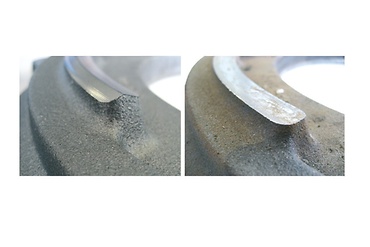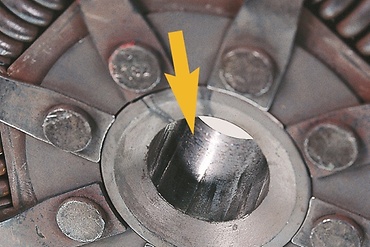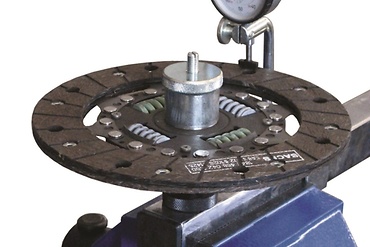How-to-guide
If the clutch does no longer disengage, the problem is not necessarily damage to the clutch. Frequent causes why the clutch doesn’t disengage correctly include faults in the release system (clutch release bearing, slave cylinder, clutch lever), a jammed pilot bearing, or non-compliance with important installation requirements.
Check:
- Were all check points observed during installation? See the SACHS workshop tip: Installing clutches
- Worn components in the release system?
- Cables, hydraulics, pivot points
- Correct setting?
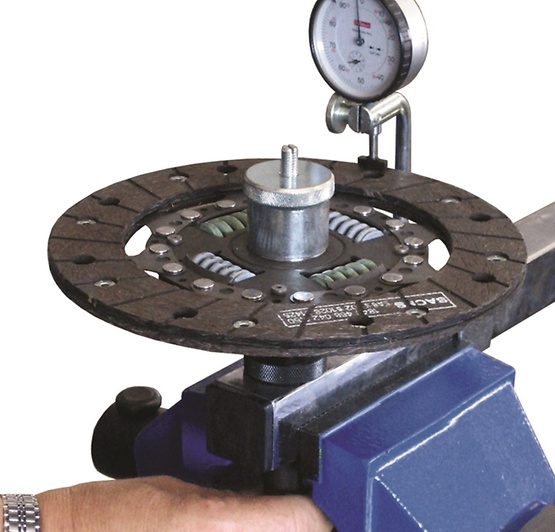
Cause:
- Deformation during transport or installation
- Lateral run-out of approx. 0.5 mm significantly exceeded
Consequence:
The specified lift on the pressure plate is no longer sufficient to ensure full disengagement.
Comment:
Always check clutch disks for lateral runout before installation.

Cause:
- Not or not correctly greased during installation
- Contamination of the friction surfaces due to incorrect handling
Consequence:
Clutch disk fails to slide freely on transmission shaft, jams. Clutch facing still contacts friction surface on flywheel.
Comment:
Clutch grab may be noticeable in early stages. Always use high-performance lubricant, SACHS No. 4200 080 050.
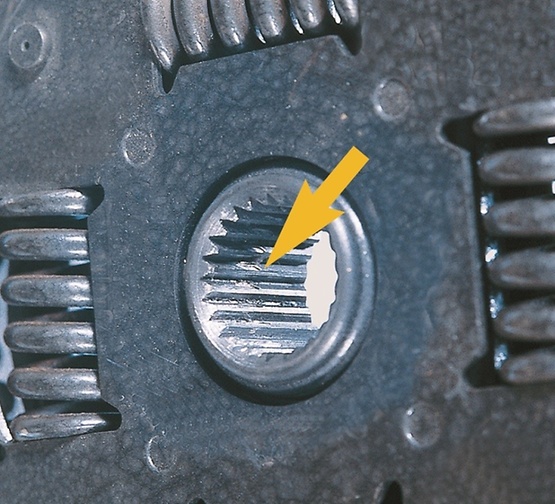
Cause:
- Transmission shaft and clutch hub forced together during installation
- Excessive angular movement during transmission installation
Consequence:
The clutch disengages badly because the clutch disk jams instead of sliding on the input shaft.
Comment:
- Center the clutch disk - using the right tools - during installation
- Do not move the transmission too far up and down or laterally during mounting

Cause:
- Input shaft jammed against clutch disk hub during installation
- Deformation due to severe overheating (blue discoloration of metal components)
Consequence:
The clutch does no longer disengage because the prescribed lift on the pressure plate is no longer sufficient.

Cause:
- Engine or transmission dropped with the input shaft still in the clutch disk hub, fracture due to lever effect
- Parallel or angular offset
Consequence:
Clutch disk lateral run-out too large.
Comment
- Do not move the transmission too far up and down or laterally during mounting.
- Only lower transmission during disassembly and assembly when the input shaft is not inside the clutch disk.
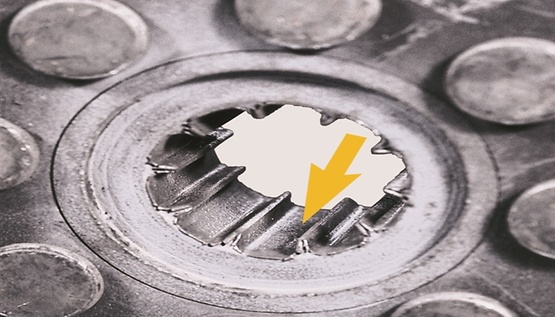
Cause:
- Clutch bell housing and crankcase flange not centered, wobble motion due to angular or parallel offset
- Pilot bearing missing
- Transmission input shaft has excessive play or is not guided
Consequence:
- Hub jammed or tilted on transmission input shaft
- Hub spline heavily worn
Comment:
Can also cause noise.
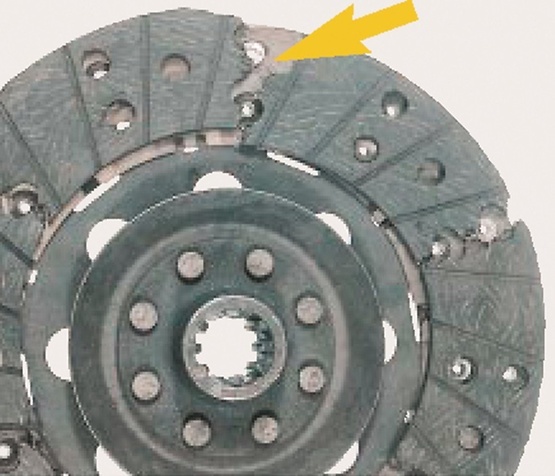
Cause:
- Driving at high roll speeds in low gear with the clutch pedal depressed, clutch disk exceeds maximum permissible speed (burst speed)
- Selecting the wrong (too low) gear when downshifting
Consequence:
Facing debris gets stuck in the flywheel or in the clutch pressure plate housing.
Comment:
The engine is not involved at all! Facing burst speed is higher than the maximum engine speed. Overheated facings may burst earlier.

Cause:
- Low-revving driving style, driving at low speeds in high gear and full throttle
- Extreme irregular engine operation
- Worn joints in the driveline
Consequence:
Fragments are thrown outwards and get stuck in the facings.

Cause:
- Extreme thrust load due to incorrect shifting
- Improper towing maneuvers
- Operational errors on the roller test stand
- Play in the driveline
- Bent during installation
- Transport damage
Consequence:
Insufficient pressure plate lift. The clutch doesn’t fully disengage.
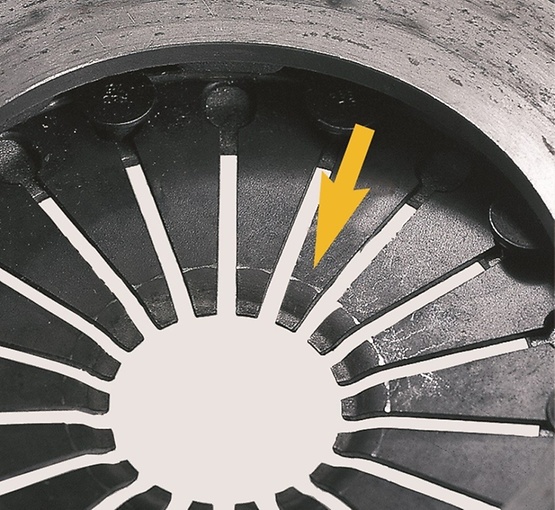
Cause:
- Permissible release travel exceeded
- Incorrect clutch disk installed
- Clutch disk installed wrong way round
Consequence:
Diaphragm spring drives clutch disk
Comment:
Also causes noise.
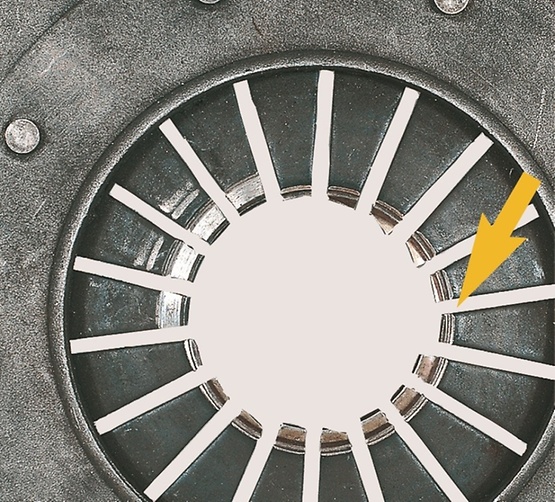
Cause:
- Clutch releaser preload too low
- Clutch actuation system worn
- Guide tube worn or bent
- Engine and transmission not precisely centered
Consequence:
Continuous off-center clutch releaser contact with the diaphragm spring tips exceeding the self-centering capacity. These relative motions increase wear on all mechanical operating elements. Clutch does not disengage properly. This also applies to the release levers.

Cause:
- Clutch permitted to slip constantly
- Insufficient downforce of the clutch pressure plate
- Problems with the release system, e.g., stiffness
- Contamination with oil or grease
- Excessive flywheel thickness
Consequence:
Insufficient pressure plate lift.
Comment:
Extreme overheating can cause irreversible dishing of the pressure plate leading to disengagement problems.
ZF Aftermarket product range
Discover the complete portfolio of clutch systems in our product catalog.
